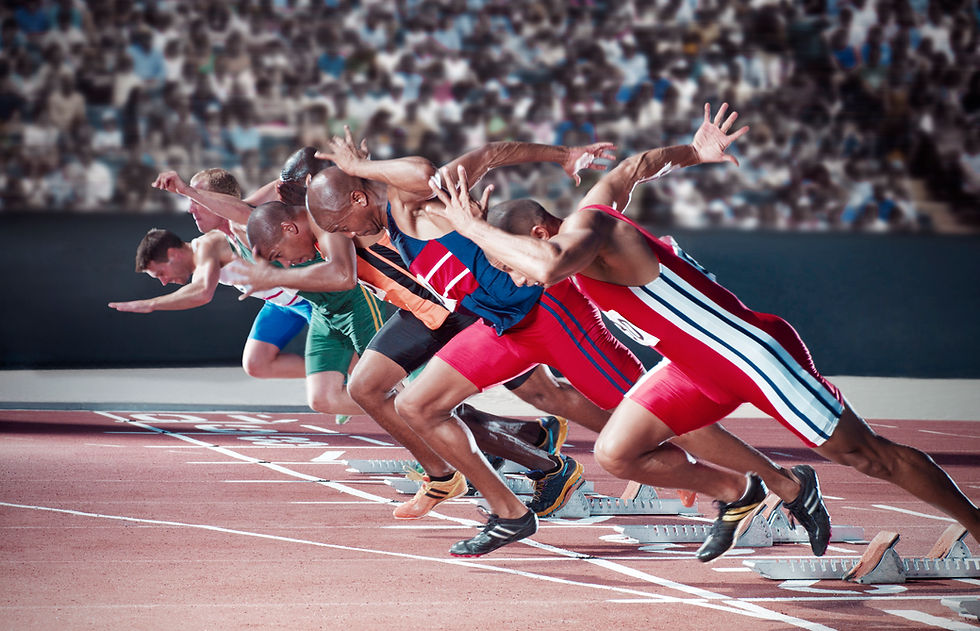PAIN FREE RUNNING : YOUR KEY TO CONQUERING A RUNNERS KNEE
- Team PhysioQinesis : Credit Viraj Shah
- Jan 5, 2024
- 2 min read
Updated: Feb 7
As a dedicated runner, you may have encountered the frustrating disruption of knee pain affecting your rhythm. If so, you're likely familiar with the term "Runner's Knee." This common ailment can pose a significant hurdle in your running journey. However, this blog will serve as your comprehensive guide to understanding, preventing, and overcoming the challenges associated with Runner's Knee.

What is Runners Knee?
Runner's Knee, also known as Patellofemoral Pain Syndrome (PFPS), is a common knee condition that often affects runners and athletes who engage in activities that involve repetitive knee bending, such as running, jumping, or squatting.
Risk Factors for Runners Knee
Overuse and High-Impact Activities: Engaging in repetitive high-impact activities like running can strain the knee joint.
Muscle Weakness or Imbalances: Weak or imbalanced muscles around the knee, particularly the quadriceps and hip muscles, can lead to poor joint alignment and stability, increasing the risk of Runner's Knee.
Inadequate Warm-Up or Cool-Down: Skipping warm-up and cool-down routines can leave the knee joint insufficiently prepared for exercise, making it more susceptible to injury.
Running Technique: Poor running form, such as overstriding or inadequate foot support, can increase the stress on the knee joint.
Footwear: Worn-out or inappropriate running shoes can affect the distribution of impact and contribute to PFPS.
Symptoms of Runners Knee
● The pain may be described as a dull ache, sharp, or throbbing, and it often worsens when bending the knee.
● Pain often intensifies when running or walking on inclines, as this places greater stress on the knee joint.
● The affected knee may feel stiff, and you may notice a decreased range of motion.

How Sports Physiotherapist can help you ?
a. Assessment and Diagnosis: The first step involves a comprehensive assessment to confirm the diagnosis and identify contributing factors, such as muscle imbalances, joint alignment issues, or running form problems.
b. Pain and Inflammation Control: Physiotherapists may employ techniques like ice, manual therapy, and taping to reduce pain and inflammation around the knee.
c. Bracing and Taping: The use of knee braces or taping techniques may be recommended to provide additional support and alleviate knee pain during physical activity.
d. Flexibility and Mobility Exercises: Physiotherapists design specific stretching routines to enhance flexibility in the quadriceps, hamstrings, and hip muscles.
e. Muscle Strengthening: A key aspect of treatment is strengthening exercises for the quadriceps, hamstrings, hip muscles, and core to improve joint stability and alignment.
f. Footwear and Orthotics: Recommendations for appropriate running shoes or custom orthotics can be made to support healthy knee alignment and reduce stress on the joint.
g. Training Modifications: Physiotherapists help athletes modify their training routines to prevent overuse and ensure a gradual return to activity.
h. Progressive Return to Sport: Physiotherapists create a structured plan for athletes to safely return to their sport, gradually increasing the intensity of activities.
i. Monitoring and Follow-Up: Regular assessments and check-ins help track progress and make necessary adjustments to the treatment plan.

Comentarios